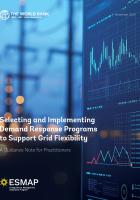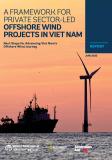Publications
This guidance note has been developed to serve as a primer for utilities and regulators in developing countries on how to select and implement retail demand response (DR) programs to address electric grid issues. DR can be employed to alleviate a range of challenges, including peak load growth, distribution system constraints, and integration of variable renewable energy (VRE) and electric vehicle (EV) charging. An example of peak load growth comes from Bangladesh, where peak loads more than quadrupled over 2008-18; expensive peaking generation units had to be acquired. But a World Bank study found that the adoption of light-emitting diode (LED) bulbs in combination with a direct load control (DLC) program can reduce peak demand at about one-fifth of the cost of installing new peaking generation units. In Jordan, the utility’s inability to integrate increasing shares of VRE in the transmission and distribution (T and D) network is cited as a key hurdle to further growth of the country’s renewable energy program, and improved load management is recommended to match demand and supply in a manner that reduces overall system costs and incremental integration infrastructure investments. This note focuses on retail DR programs because they are applicable to all types of electric utilities, regardless of whether a wholesale market is present. The implementation guidance accounts for the capabilities and constraints of utilities in developing countries, and outlines guidelines for selecting, designing, and implementing successful DR programs, informed by case studies from emerging markets. While DR cannot alleviate all grid constraints, it is important that regulators and utilities consider including DR as part of their toolbox in future infrastructure planning and asset management.
World Bank. 2024. Selecting and Implementing Demand Response Programs to Support Grid Flexibility: A Guidance Note for Practitioners. © Washington, DC: World Bank. http://hdl.handle.net/10986/42516 License: CC BY-NC 3.0 IGO.




